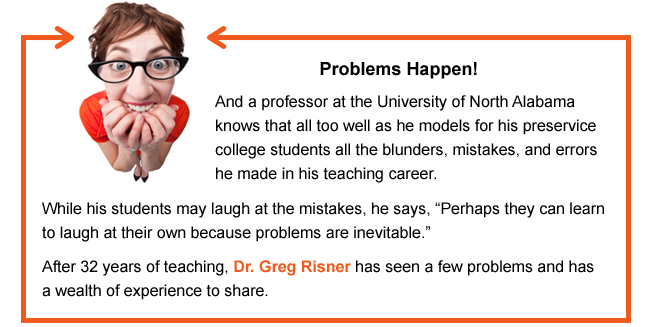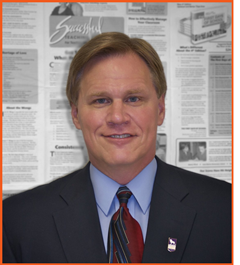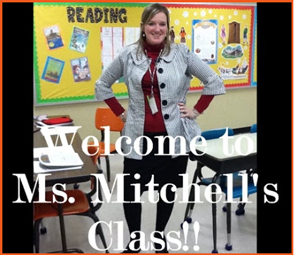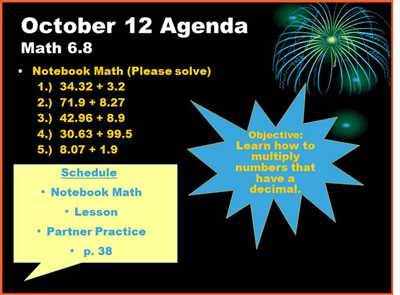
|
Effective Teaching...
by Harry and Rosemary Wong |
To print: Select File and then Print from your browser's menu ------------------------------------------------------------------ This article was printed from Teachers.Net Gazette, located at https://teachers.net. ------------------------------------------------------------------ |
Learning, Laughing, and Leaving a Legacy

What They Don’t Teach You in College Classes
 Dr. Greg Risner provides future teachers the opportunity to dig in and experience first-hand what it means to be an effective teacher and a good classroom manager. Greg wants his students to understand that problems and mistakes are an unavoidable part of being a teacher.
Dr. Greg Risner provides future teachers the opportunity to dig in and experience first-hand what it means to be an effective teacher and a good classroom manager. Greg wants his students to understand that problems and mistakes are an unavoidable part of being a teacher.
In his course “First-Year Teacher,” Greg prepares students for the realities of teaching. His goal is to address the typical struggles of a first-year teacher. By analyzing what not to do, he prepares his students for a successful first year.
Many new teachers bemoan the fact that they never had a course in college on classroom management. If they did, it usually wrongly centered on discipline—with these teachers entering the profession trying to keep students’ behavior under control in the classroom. Whereas, those students that have an actual classroom management course become teachers that are focused on managing and organizing a classroom for academic learning. They are proactive in setting up a classroom for success.
For more on the difference between discipline and classroom management, please read chapters 18, 19, and 20 in The First Days of School.
Jacob Kounin, one of the first to research and study classroom management, found that good classroom management is based on the behavior of teachers and not the behavior of students. In a well-managed classroom, the teacher takes action. The teacher organizes and structures students, space, time, and materials so that learning can occur and then develops a set of procedures that let students know what to do, how to do it, and when to do it.
A procedure is used to accomplish a task. It is not a rule and there are no consequences if the procedure is not done properly. The procedure is simply rehearsed again until the procedure is carried out as desired. Procedures guide students in how to get things done in a classroom. Procedures provide structure, consistency, predictability, and expectation. In a classroom with procedures in place, students and the teacher can focus on learning.
EED 374: “First-Year Teacher”
Greg’s course, EED 374: “First-Year Teacher,” is designed for education majors in the semester before they begin student teaching. It is a course that connects theory to the classroom. Students don’t just read about classroom management strategies. They learn how to implement these strategies, so they can understand their importance in an effective classroom. (Click here to see the course outline.)
| The goals for Greg’s first-year teacher course include these: | |
|---|---|
| 1. 2. 3. |
Understand the complexities of today’s classrooms |
Greg uses microteaching to give his students exposure to and experience in handling the complexities of the classroom. He says, “My purpose is simple—make the neophyte teacher think of more things than just what they are saying while they are teaching. I make them overlap and multi-task—what’s coming up next and where their materials are.” Over the course of the semester, he asks each student to teach a short lesson to the rest of the class, who pretend to be elementary school students. Microteachers begin by implementing a procedure of their choice. Then they teach a lesson of their choice, selected from the Alabama Course of Study.
To make it more interesting, Greg assumes the role of that student. With each lesson, he addresses a different problem scenario that is likely to happen in the classroom—throwing paper balls at the teacher, going to the bathroom and never coming back, acting out, diverting attention to himself instead of the lesson, refusing to do the work, not following a just rehearsed procedure, and constantly talking—to name a few.
| With microteaching, Greg wants students to realize how simple it is to practice, practice, and practice procedures in the classroom. He scores the exercise using the same rubric principals use to rate first-year teachers. Students are evaluated on | |
|---|---|
| 1. 2. 3. 4. |
introduction of themselves to the class, |
Given the open-forum discussion format for the course, much time is spent analyzing what went wrong as well as what went right with the microteaching lessons. By understanding what it means to be an ineffective teacher, students gain a better understanding of what it means to be an effective teacher.
The concept of microteaching has been around since the 1960s as a tool for accessing performance. Teachable moments are recorded and then reviewed in a safe environment with colleagues and coaches to get feedback on performance. Athletes have been using this technique for decades. Often in interviews, they will refer to “looking at film.” This is their microteaching moment, where they dissect their performances and the performances of their opponents, so they can improve the next time they take the field.
Microteaching paves the way to improved performance in a risk-free atmosphere. For teachers, lessons learned can be implemented in the classroom for improved teacher and student performance.
What NOT to Do
Greg teaches it is just as important to know what NOT to do in the classroom as it is to know what to do. He contends that education majors spend most of their training looking at what works and spend a lot of time observing, discussing, and dissecting the strategies, techniques, and best examples used by effective teachers. But to understand how to be an effective teacher, one must also understand what it means to be ineffective.
Along with a former student, Greg created lessons on a DVD to demonstrate just what it means to be ineffective and effective.
Watching the Ineffective Teacher
Using the DVD, Greg first shows a lesson for his students to watch and act as evaluators as they watch a student teacher teaching a clinical lesson. The student teacher starts by doing everything wrong. She has no introduction of herself. There is no lesson objective. There is no procedure for answering questions or going to the rest room. She shows very low expectations of the students. She chews gum, texts, and reads magazines while the students work. The class is lost and the result is a chaotic classroom.
Watching the Effective Teacher
Halfway through the lesson, the student teacher stops the class and starts over again. This time, she teaches like an effective teacher. Christy Mitchell, a student in the EED 374 class, remembers her astonishment as she watched the video.
“It was amazing to see that giving clear objectives, using a personal introduction, explaining procedures, and radiating a positive expectation attitude will completely change the dynamics of a classroom. This was an ‘aha’ moment for me in my education program. “It helped me to realize the power that a teacher has on all aspects of the classroom.” |
Problems Are Inevitable
Regardless of the number of years a teacher has taught, problems are going to happen in the classroom. Greg helps students to learn how to identify and solve these problems using classroom management techniques. He also stresses the importance of having a plan in place to prevent many of the problems that could happen in the classroom. The stronger the plan, the less likely that problems will happen.
| One of the assignments in Greg’s “First-Year Teacher” course and a “Classroom Management Course,” taught by Greg’s colleagues in his department, Dr. Pam Chaney, Dr. Annie Dillon, and Dr. Vickie Haulsey, requires students to select an elementary grade level and then develop a theoretical plan to make it happen in the classroom. Such activities include: | |
|---|---|
| • • • • • • • • • |
Posting a classroom agenda |
Part of the course includes discussion of each unit in The First Days of School with "what if this doesn't work" scenarios so students can actively be thinking about how to remain calm in the face of chaos.
Grace Anne Coburn, another student in Greg’s class says, “Doing one of these activities launched my first interest in the classroom management process and also helped me to realize the importance of having a plan. I feel that Classroom Management is one of the most important aspects of an education program.
“Without a classroom management plan that worked for me,
teaching would have been next to impossible.”
Christy and Grace Anne’s First Year
 Christy Mitchell, on the left, and Grace Anne Coburn, on the right, are former students who now teach at Hibbett Middle School in Florence, Alabama. They credit their success to the experiences they had in EED 374 “First-Year Teacher.” They marvel that this was their first glimpse of how to handle a group when they are not acting as planned. They confirmed, “Microteaching really helped us to build more confidence before hitting the classroom.”
Christy Mitchell, on the left, and Grace Anne Coburn, on the right, are former students who now teach at Hibbett Middle School in Florence, Alabama. They credit their success to the experiences they had in EED 374 “First-Year Teacher.” They marvel that this was their first glimpse of how to handle a group when they are not acting as planned. They confirmed, “Microteaching really helped us to build more confidence before hitting the classroom.”
Christy and Grace Anne said that their first year of teaching was not a nerve-wracking journey because they were able to implement what they practiced during their microteaching sessions.
Introduction of Yourself
Effective teachers introduce themselves to their students on the first day of school. Christy says, “This does not mean standing in front of your class and saying, ‘Hi, my name is Ms. Mitchell and I am your teacher.’ These children are going to be with you eight hours a day, five days a week, for the next year. Let them truly get to know you.”
 Christy put together a digital slideshow with music using Microsoft’s free software Photo Story. (http://microsoft-photo-story.en.softonic.com/) She shares about her high school and college life, family and friends, favorite songs, movies, books, music, and even a picture of her dog. “Sometimes these are the things we hold back,” Christy says, “but when you let them into your life, they are willing to let you into theirs.”
Christy put together a digital slideshow with music using Microsoft’s free software Photo Story. (http://microsoft-photo-story.en.softonic.com/) She shares about her high school and college life, family and friends, favorite songs, movies, books, music, and even a picture of her dog. “Sometimes these are the things we hold back,” Christy says, “but when you let them into your life, they are willing to let you into theirs.”
Watch an abridged version of how Christy introduces herself to her class.
Classroom Management
Christy and Grace Anne have learned that if you don’t plan your classroom procedures, then you are planning for disaster. They suggest sitting down and playing out every possible scenario in your head, from getting a tissue to fire drills. They recommend making a list of everything that needs a procedure—and then create each procedure.
Once you have your list of procedures, make them as easy as possible to understand. Post visuals in your classroom. Teach them to your students, and model each procedure as you explain it. “Literally take your body and act out the entire procedure,” they say. Once the modeling is done, then it’s time for the students to practice, practice, and practice the procedure.
“Knowing your procedures, modeling them, and practicing them are the key to success,” they write. “When we are not worried about constantly explaining how to do something, we can focus more on instruction.”
A classroom management plan contains all of the procedures you want to have happen in your classroom. Click here to see Christy’s PowerPoint presentation of her classroom management plan.
Delivery of the Lesson
Effective teachers know to tell their students what they are going to learn before they begin the lesson. This does not mean reading the objective at the start of each lesson. Christy and Grace Anne know that your goal is to make the students focus on what you are about to teach them.
They suggest using media and technology to engage the students in the lesson to be taught. Show a video clip or play a popular song. Find a rap version of what you are teaching them. Find an image on the Internet that relates to the lesson.
Grace Anne says, “When you start talking about things that they are familiar with, they are able to make the connections and make the lesson real life. Help them put their focus goggles on.”
 An effective way to let students know what they will be doing and learning before the lesson begins is done with an agenda posted before the students walk in the classroom.
An effective way to let students know what they will be doing and learning before the lesson begins is done with an agenda posted before the students walk in the classroom.
The agenda is posted consistently in the same location each day. The students can see at a glance what is going to learned, how it is going to be taught, and when instruction will take.
Grace Anne posts the agenda before the students enter the classroom so learning takes place the moment they walk in the door.
Christy and Grace Anne know that having plans and procedures in place at the start of their teaching career doesn’t mean they are done with that task. They have the wisdom of effective veteran teachers when they say, “We will tweak and change for next year as that is what teaching is all about. We will grow, reflect, change, implement, expect the best, and then repeat.”
| The best advice they had at the end of their first year was, |
|---|
| “Do not give up. Choose to be effective.” |
Second Year Observations
| Christy and Grace Anne wrote to us again at the end of their second year to say that it was even more successful than their first! |
|---|
| “Teaching isn’t perfect and never will be.” “Laughter is a key ingredient in the classroom.” “Students WILL forget their pencils (a lot).” “The key to success is being flexible!” “Students secretly crave structure and management.” |
The Key to Success
Christy and Grace Anne succeeded because of ORGANIZATION.
Christy and Grace Anne believe, “Your students will recognize when you have a plan, or when you don’t. They need to know that you are ready for what is about to take place, in order for them to feel secure in the classroom.”
That plan, they say, consists of procedures, procedures, procedures! They establish a procedure for everything. They post the procedures. They explain them. They demonstrate them. They practice them. Once they do this, everything else falls into place. “Students know what we expect from the beginning to the end.”
If there is one thing they learned in Greg’s “First-Year Teacher” course, it is that problems happen, and nothing in the classroom is ever perfect. However, Christy and Grace Anne say you can still plan for success. If you are prepared for anything, and stay flexible, you can deal with whatever might come your way. They write, “Even when your plans or management do not work according to plan, having them in place is crucial to success in the classroom.”
Having a plan was crucial to Kara Moore’s success as we shared in last month’s column. She discovered two weeks before school began that she was being assigned to a different subject, at a different grade level, in a different classroom, and on a different floor—yet she succeed, because she had a plan.
Not Perfect—But Successful
Greg shares, “Research validates that teachers who experience a successful first year of teaching (not perfect—but successful), are extremely likely to remain in the teaching profession.” His development of the First-Year Teacher was a way to share the things he used to stay positive and excited about teaching when he was in the classroom.
Greg helped Christy and Grace Anne realize the importance of truly caring for students. They learned that any moment can be a teachable moment and to always look for those. “Teaching is not perfect, and that is okay. Dr. Greg Risner helped us to understand the potential impact teachers have on their students.”
Greg walks his talk. His life has been spent being the guiding hand and heart behind new teacher success after they leave his classroom. He loves what he does. In fact, he loves what he does so deeply that he donates his University of North Alabama salary for scholarships, the Gregory Paul Risner New Teacher Scholarship. He had a guiding hand that helped him be who he is today, and this is his way of honoring those who helped him. The local newspaper shared his story in which he says he did not donate his salary to be called a hero. He does it because it is a joy to teach.
Greg talks about teaching with the enthusiasm of a new teacher, despite his 31 years of teaching new teachers. He teaches his students to laugh at their mistakes, but to learn from them to be an even stronger teacher. He models leaving a legacy and the rewards and joy of teaching that come with it.
The beginning teachers that have passed through his classroom have a solid foundation for being the most effective teachers students may ever encounter. You have an opportunity to learn from him with the information he shares in this article. You don’t have to be perfect for your students—just successful! We believe you can do this, in tiny steps, building, reflecting, and establishing a classroom brimming with expectation and success.